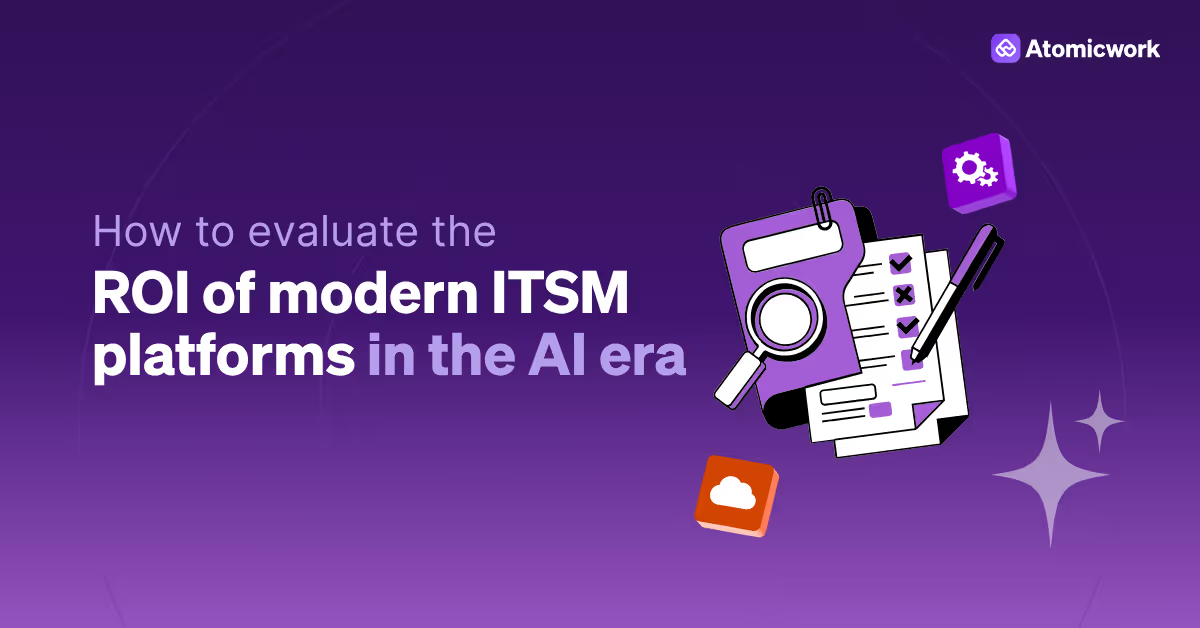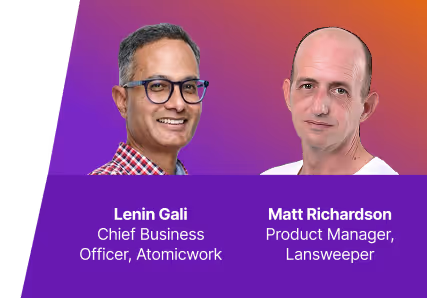
















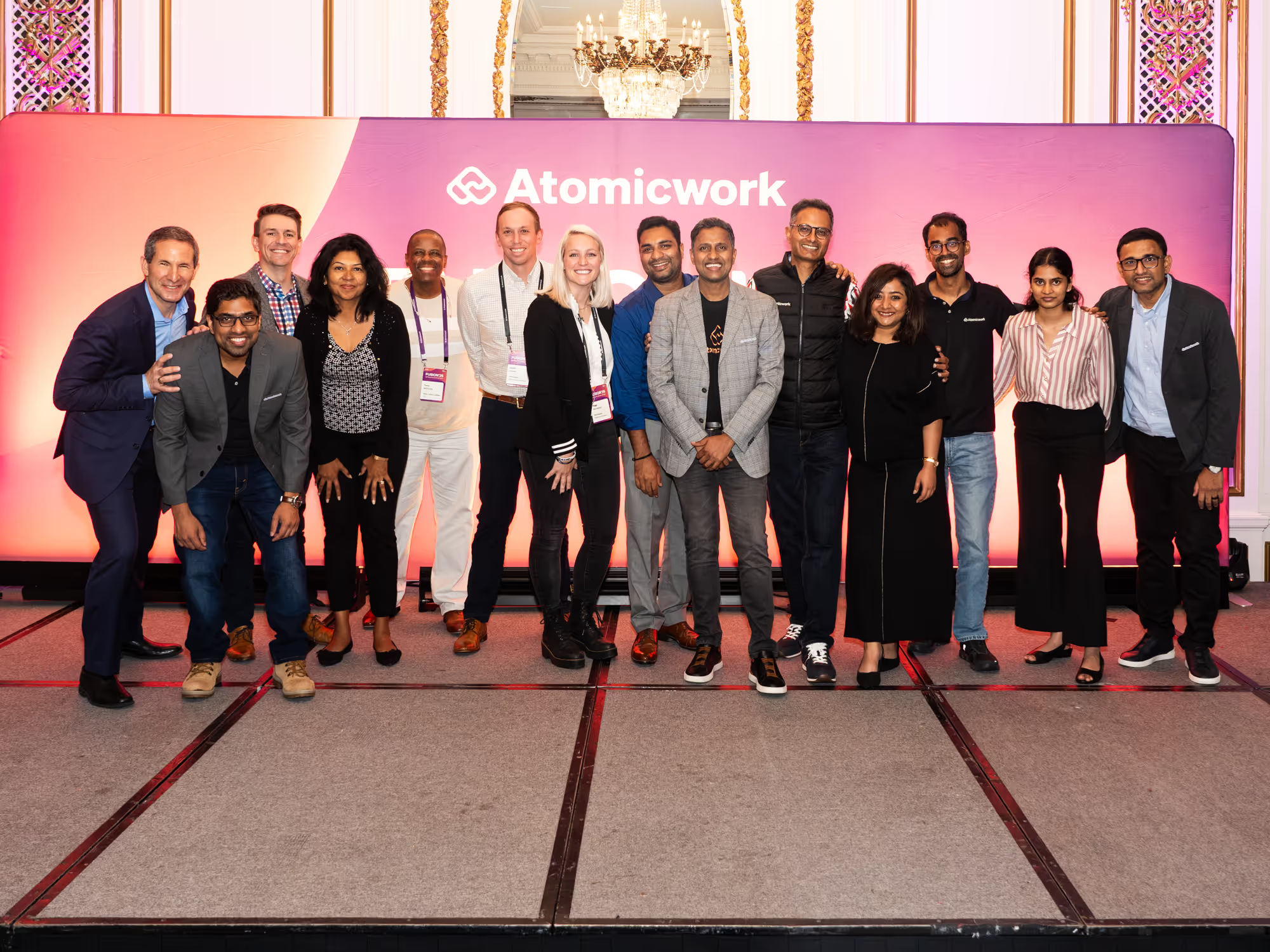
On September 24, 100+ CIOs and technology leaders gathered at the Palace Hotel in San Francisco for the very first edition of FUSION, Atomicwork’s annual customer conference.
The event was a carefully curated forum for candid conversations where leaders challenged each other’s thinking, compared notes on what’s working, and sketched out what the future of enterprise IT could look like in the age of AI.
The energy was unmistakable—with leaders from Microsoft, Google, Zuora, HP, ŌURA, JumpCloud, and more joining us on different panels and sessions that had one common thread: accelerating enterprise AI adoption and implementation.
If there was one theme that carried through every session, it was this: AI is no longer on the horizon. It’s here, and CIOs are the ones turning possibility into practice.
You can catch the keynote, session highlights, and panel discussions here.
Our CEO, Vijay Rayapati, opened the day with a simple but tough question: If AI is the opportunity everyone believes in, why are so few companies scaling it across their business?

His keynote walked through the four waves of enterprise AI—foundational models, reasoning, multimodal, and AI agents—and what each means for growth in terms of knowledge access, developer productivity, customer experience, and enterprise processes.
Vijay stressed on how CIOs who hold the keys for AI to deliver 100x returns and shared three things that they’d need to orchestrate this growth:
Jeff Teper, President at Microsoft, joined virtually and shared about the pace of change and the importance of rapid experimentation. He underlined how CIOs need to balance innovation with change management, create space for AI teammates to amplify human potential, and never lose sight of the bigger purpose of work.
In the AI Builders’ Panel, moderated by Aparna Chugh of Atomicwork, we heard from Deepti Srivastava (Founder, Snow Leopard), Rishi Bhargava (Founder, Descope), Shuhao Zhang (CPO, TinyFish), and Sudarshan Kamath (Founder, smallest.ai) on moving beyond PoC to real-world enterprise AI deployments.
The panel unpacked the reality of enterprise AI adoption, stressing the challenge of connecting probabilistic agents to deterministic, real-time enterprise data while overcoming data silos. The group agreed that successful production deployments require rigorous 'guardrail engineering' and a 'zero trust' approach to govern non-deterministic actions.
In a world that's non-deterministic and you want to make deterministic decisions, you have to make that connection between the non-determinism of this agent and the deterministic pieces that you need to make decisions. - Deepti Srivastava, Founder and CEO of Snow Leopard
The panel wrapped up with an intriguing rapid-fire session where the panellists shared the worst products, they’ve shipped that ultimately made money and the biggest lies vendors tell CIOs!
One of the most anticipated sessions was the CIO panel on AI implementation for business transformation. Lenin Gali moderated a rich discussion with Chad Ghosn (AMMEX), Mark Gill (Zuora), Patrick Young (Skydio), and Venky Rangachari (HPE Networking).
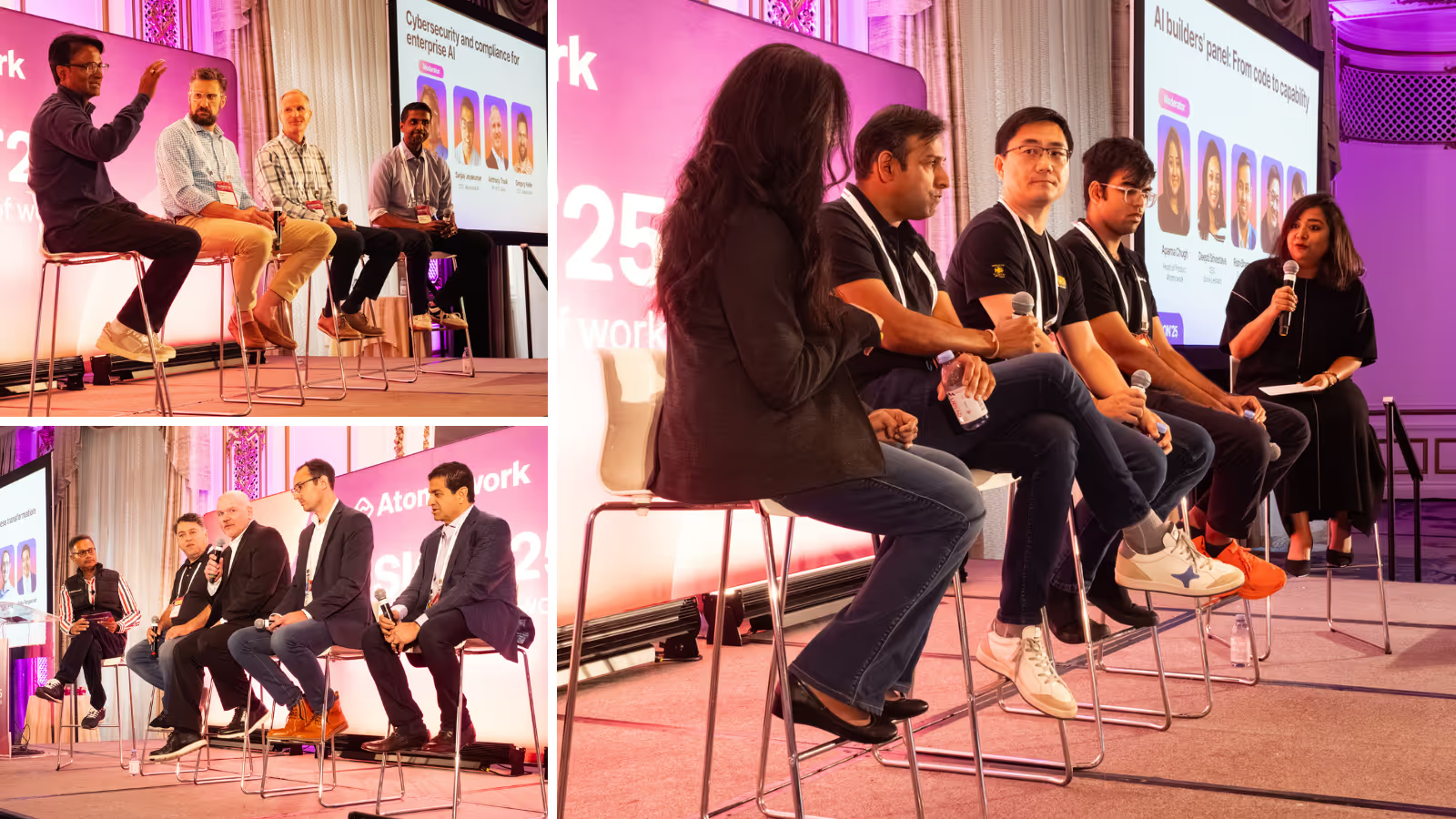
The CIO panel focused on how successful AI deployments must be highly targeted and impact-driven, demonstrating operational ROI like time saved or efficiency gained rather than relying on a "shotgun" approach. The panellists agreed how achieving business transformation demands robust governance, broad cultural change, and transparency with employees.
We decided very early on we need to include everybody. Like, like this needs to be a company journey, not a technical journey where we provide solutions to anyone. - Mark Gill, Senior IT Director at Zuora
No conversation about AI in the enterprise is complete without trust. In the Cybersecurity and Compliance Panel, Sunil Potti (ex-Google) led a discussion with Sanjay Jeyakumar (Abnormal AI), Anthony Trask (ŌURA), and Gregory Keller (JumpCloud) on why establishing clear guardrails to manage the risks and complexity introduced by AI is important for accelerated AI transformation.
It is the guardrails that put your F1 car on full speed. - Sanjay Jeyakumar, CTO of Abnormal AI
The panellists also dived into specific examples of how AI is being used to enhance internal security like accelerating threat modelling for distributed teams or improving traceability learning from 12 years of code.
Later in the afternoon, Karthik Chakkarapani, CIO of Zuora, outlined what an AI -powered workplace really looks like. He noted how interfaces are disappearing and The goal for enterprises must be to enable a 'new agentix zero UI' that let the systems do the work rather than forcing employees to navigate multiple apps.
He touched on the Zuora’s ‘future of work’ vision that comprises of four interconnected areas – Enterprise Context, Enterprise Search, Agentic AI, and Continuous Learning.
At Zuora our vision is pretty straightforward... we have very three simple statements that we're going after. One is amplifying human potential. If you're doing X amount of work today, can you do X plus Y with the same capacity? The second one is reducing friction by eliminating multiple steps. And the third one is all about unlocking new productivity that we have not discovered before. - Karthik Chakkarapani, CIO of Zuora
Karthik’s session was backed by Zuora’s own story to show what’s possible: thousands of hours saved, faster code delivery, transformed support operations, and measurable business impact. His open challenge to his peers was to adopt a “multiplier mandate” rather than thinking in terms of enabling tools and start architecting for exponential impact.
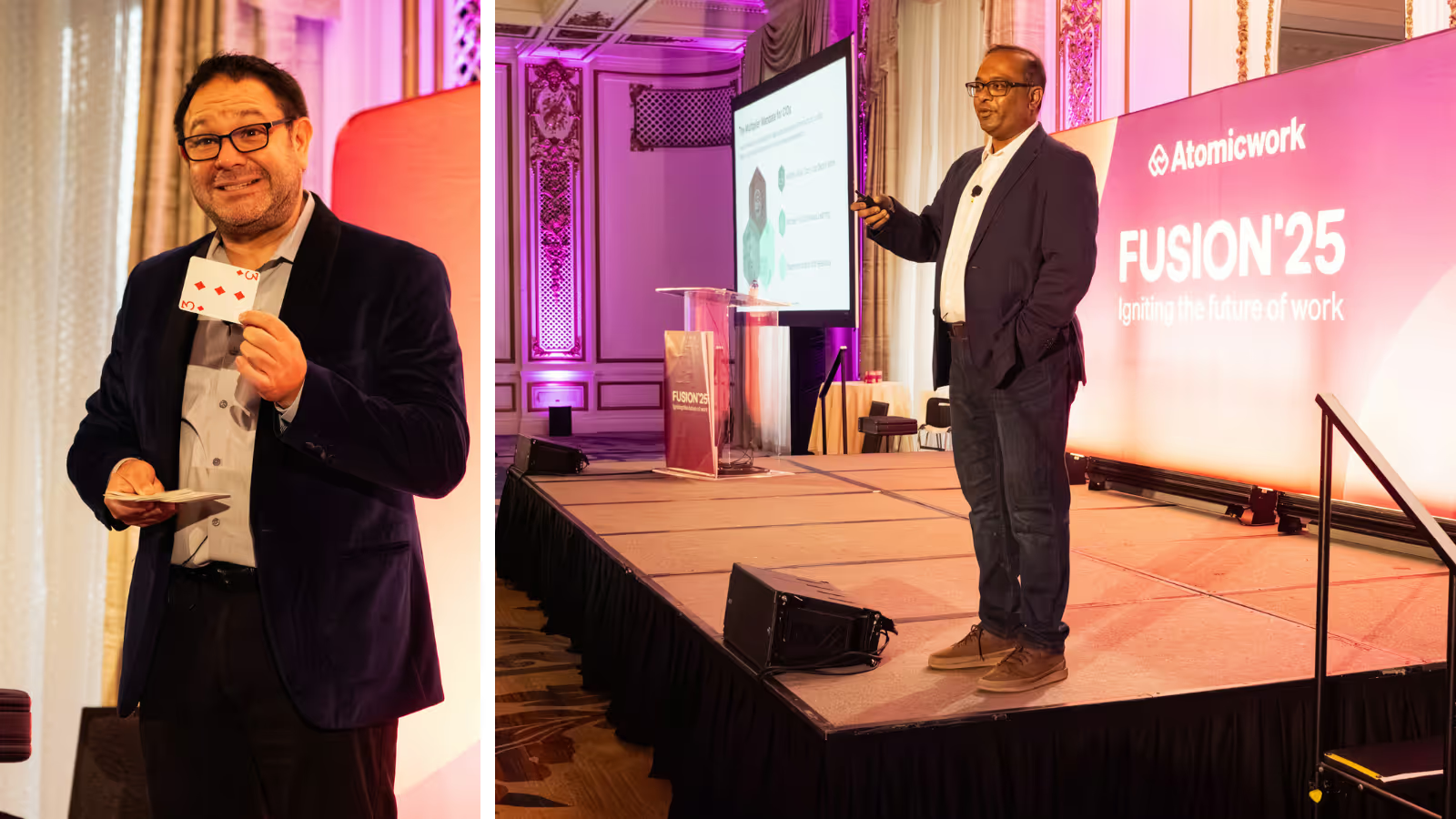
The day ended on a lighter but meaningful note. Robert Strong, magician, author, and founder of Speak About AI, used the art of illusion to draw lessons for leadership. His session titled "The Mind Magic Mindset", explored the characteristics of great magicians and how those traits apply to effective leadership and business practices.
Great magicians, he reminded us, are both interesting and interested, they share the spotlight, and they make brevity an advantage. The same is true of great CIOs.
I want you to play it like it's someone's first time and someone's last time. - Robert Strong, magician and founder of Speak About AI
What stood out about Fusion was that CIOs and technology leaders didn’t shy away from the hard conversations: scaling deployments, balancing innovation with risk, and building AI responsibly.
Across sessions, you could see the optimism: CIOs are no longer just keeping the lights on, they’re genuinely keen on shaping how enterprises will grow in the AI era.
FUSION’25 is only the beginning of the conversations that will continue to ripple through IT organizations around the world.
And yes, we can sense your FOMO. Watch the recordings of the keynote, session, and panel highlights.


